Fill the Space Emptied of Anger with
Wholesome Mind
Templestay at Sinheungsa Temple on Wando Island
Park Shin-yeong, Historical Essayist
Text by. Editorial Department Photo by. Ha Ji-kwon
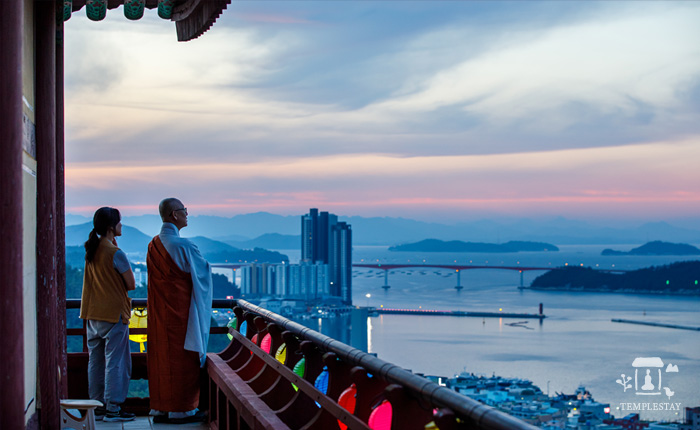
The moment one falls in love with the Templestay program varies with each person. The cozy feeling of the temple's unique layout, the beautiful buildings coexisting in harmony with nature, and the tranquility that makes it feel as if time has slowed down, all of these sensations accumulate and become factors that make one's memories of a Templestay special. Here, participants take part in activities to experience the traditional culture of Korean Buddhism, such as Buddhist ceremonies, practicing 108 prostrations, and meditation. They also enjoy rarely found leisure time by reading or taking a walk around the temple compound. Many find healing in their hearts through conversations with a monk over tea.
Among the many people who love Templestay programs, there are those who are especially fond of them and have participated numerous times. Even while living a secular life, they miss their days at the temple, and whenever they have time, they naturally plan to go again. Ms. Park Shin-young (51) is one of them. As a historical essayist, she considers temples to be her heart's true home. This is because her daily life gradually began to change, the more she began to love Templestay.
A Templestay during a Most Difficult Moment
Ms. Park says, “When I first got involved with Templestay, I was resentful about the many hardships I had endured. I was angry at my fate, but at the same time, I felt very lonely and tired. Then, I experienced an unexpected moment of healing at a Templestay. It wasn’t a big change that suddenly turned my life upside down, but it motivated me little by little to change my attitude toward life.”
Before becoming a writer, she was an ordinary office worker, until she became a victim of inappropriate behavior at work. She came forward to report it, and in the process, she learned that many other employees had had similar experiences. Five victims joined forces and began legal proceedings against the CEO, beginning a long legal fight.
During that painful time, she realized how many women had been hurt by the prejudice and ignorance that were routinely embedded in our society. Ironically, those closest to her sometimes inflicted unexpected harm After a long legal battle, the CEO's inappropriate behavior was finally punished. However, as refreshing as this was, she somehow felt even sadder and lonelier.
It was only after more than ten years that she was able to talk about this experience and publish a book about it. She used to write only historical essays, but decided to share her story of fighting against injustice. It gave her courage and a sense of solidarity with others who were suffering from similar experiences, encouraging them in the process. Although she continued to write fueled by sympathy and support, she also suffered backlash in the form of malicious comments.
Then, in 2019, her mother passed away. Resentment, anger, and deep depression came upon her in the form of panic attacks. The fact that she was angry at her fate was also obvious in that she began to see the world from a different perspective.
She spent many sleepless nights and took refuge in books to quiet her emotional turmoil. Reading and writing were her long-time friends and became a refuge that filled her emptiness.
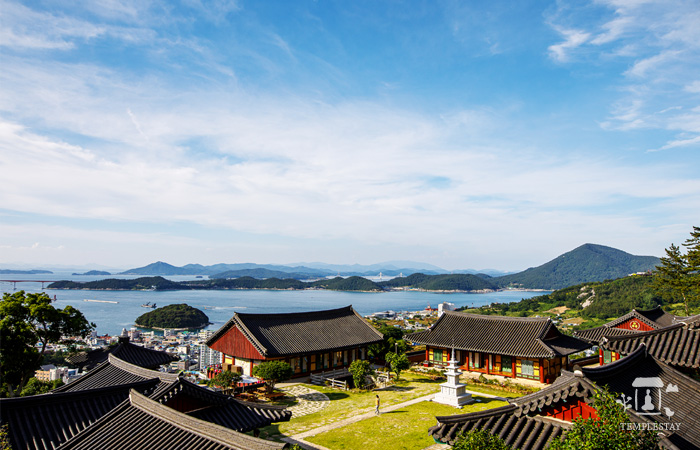
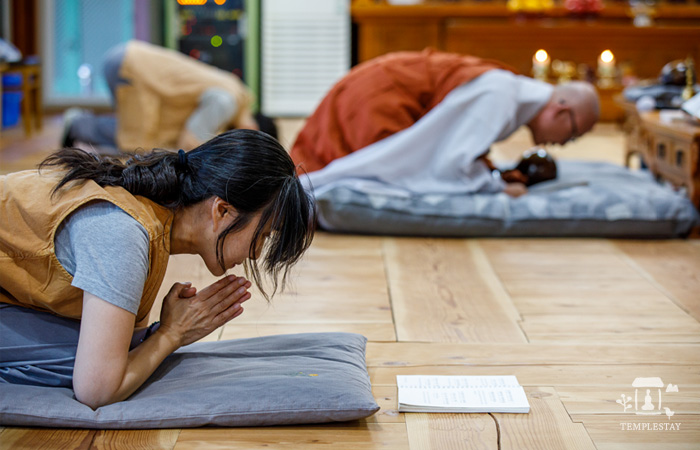
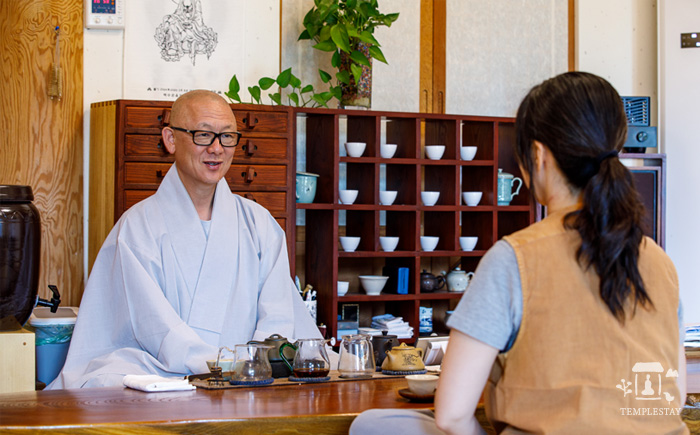
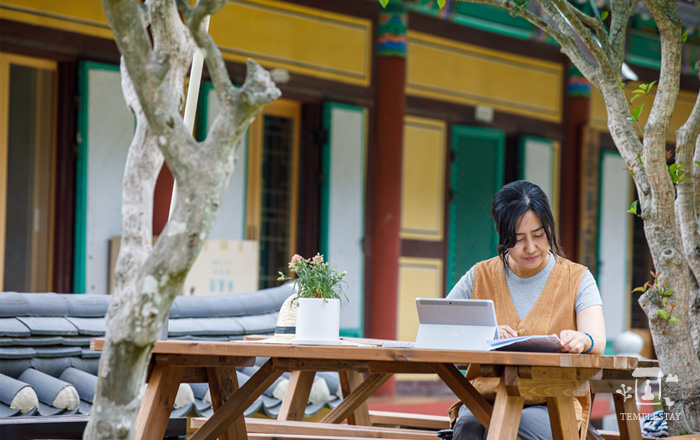
Anger toward Her Fate Turns into Compassion
When she was going through this difficult time, the first anniversary of her mother's death came.
Although their relationship had not been a very affectionate one, she simply wanted to pray for the repose of her mother's soul by relying on religion.
That's how she found Geumsunsa Temple in Seoul.
There, she experienced her first Templestay and, as part of the program, did the practice of 108 prostrations for the first time. This was the moment small seeds of change were planted.
She said, “I was slowly doing prostrations while reciting the Prayer of 108 Repentances when one of them suddenly caught my attention; it was the vow not to be arrogant. At that moment, I suddenly realized that maybe I had been fighting the world due to my own arrogance.”
Behind her strong facade of fighting injustice, she saw a tired and wounded heart. She looked back on her life and thought that, although she had been fighting the world to achieve a better life, in the end, she had been wasting time and energy instead of seeking happiness. At this moment of realization, her anger turned into compassion. She wanted to console herself for holding up so well under her burden.
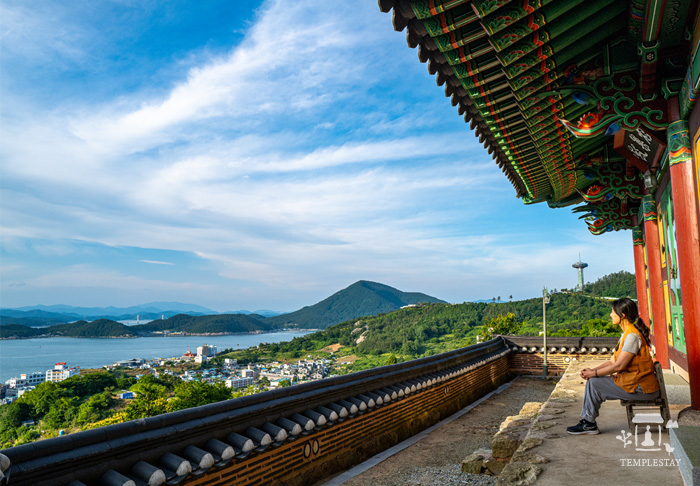
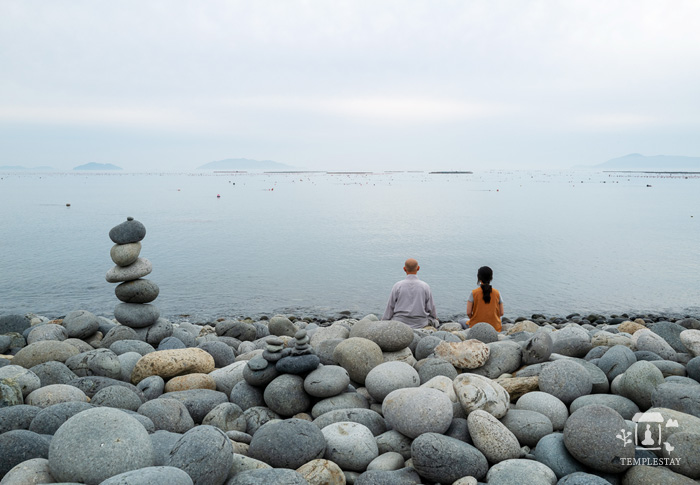
She continued her prostrations while reciting the Repentance Prayer, wishing for peace for all living things. Above all, she wished for peace for herself.
That day, she sat alone in her simple, neat oneperson room in the mountain temple and felt inner peace for the first time in a long time.
After that, Ms. Park visited a doctor's office to treat her depression and panic attacks, and continued to participate in Templestay programs at temples near Seoul several times. The anxiety she always felt when traveling alone as a woman, she did not feel at a temple. Even in a dark, silent temple in the middle of the night, she felt a sense of security that she was not alone, and above all, she felt at ease.
Having fallen for the charm of Templestay, she began looking for a temple where she could stay longer. In January 2022, she packed up her laptop and a few books in a small backpack and headed to Sinheungsa Temple on Wando Island. Sinheungsa Temple, which is over 5 hours away from Seoul by public transportation, was a beautiful, peaceful temple. The conversation over tea with monks was especially meaningful, and the seemingly indifferent but caring attention of the Templestay staff was also appreciated and friendly. Since then, Sinheungsa Temple has become her spiritual home that she visits once every season.
She says, “I always attend the dawn Buddhist ceremony. The sound of the ceremony text resonating through the surreal space and time is truly moving. When I offer a half bow in greeting with joined palms, offer prostrations while copying what the monks are doing out of the corner of my eye, and listen to the ceremony chanted in Korean, some phrases suddenly leap out at me. When I ponder those phrases, they comfort me and give me the strength to keep on living.”
A Dawn Buddhist Ceremony that Conveys Surreal Emotions
Ms. Park especially likes the phrase “With utmost sincerity I prostrate” from the Ritual of Seven Prostrations. She explains that when she repeatedly recites this phrase while doing prostrations, the moment she touches her forehead to the floor feels different. She thinks about acting with utmost sincerity while doing prostrations and vows not to speak or act rashly.
She has also almost memorized the Korean version of the Heart Sutra. Her heart is touched whenever she reads, “Because there is nothing to gain, a bodhisattva relies on the Prajna Paramita, and they have no hindrances in their mind. Because they have no hindrances, they have no fears, and they completely abandon false thoughts and enter complete nirvana.” Every time she recites the Heart Sutra, she makes a vow to live without fear or attachment. Although she says, “I am not a Buddhist,” it seems that Buddhist teachings have already naturally permeated her daily life.
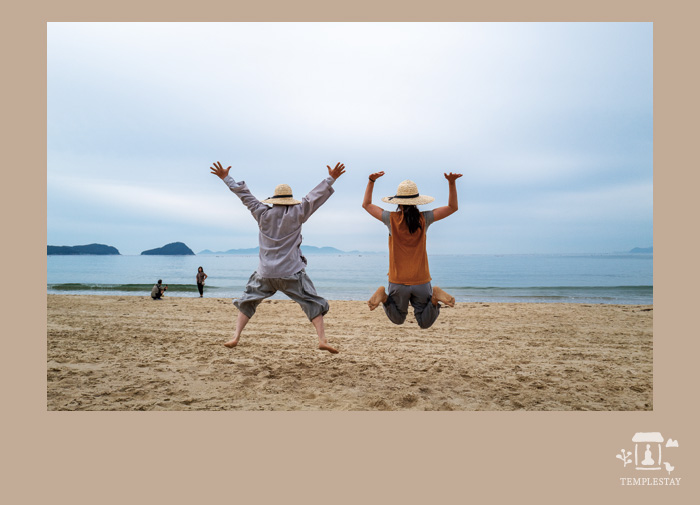
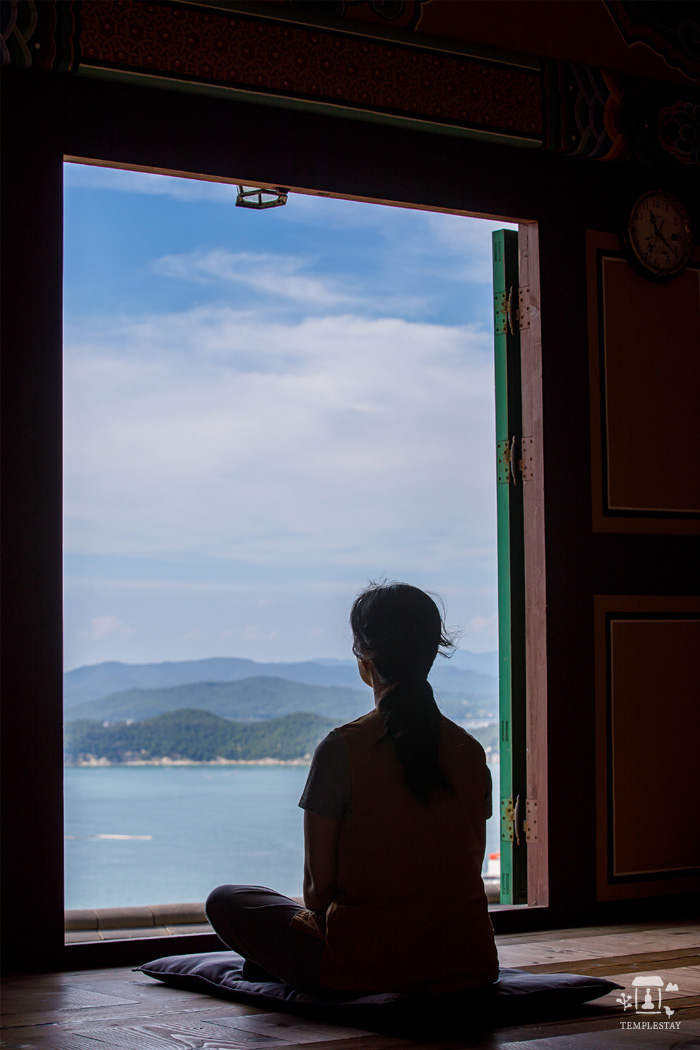
She says, “Thanks to learning the text that goes with the 108 prostrations, the Buddhist ceremonial text, and the Heart Sutra during Templestay programs, I have tried to be humble instead of arrogant. While having tea with the monks, I listen to the concerns of other participants, and talk with them, and I become humble about the burdens life brings. I think my personality has changed to be more positive and at peace by consistently participating in Templestay.”
When not attending a Buddhist ceremony, she goes for walks, reads books, and writes. The expansive view of the sea from her room at Sinheungsa Temple is refreshing, and the beautiful sunrises and sunsets seem to comfort her heart. Whenever conversing over tea with monks, they tell her to not be obsessed with the past, but be faithful to the present. She thinks that if she can really do that, her life will be worth living.
She has warm memories about conversing with other participants over tea, sharing stories, hearing about their lives, sometimes sympathizing with and sometimes comforting each other.
One day, while at Sinheungsa Temple for a longterm Templestay, she had a chance to help with a memorial ceremony in place of the family who couldn't attend. It was just a coincidence that she had been sitting there because she liked the sea view from Myeongbujeon Hall where Ksitigarbha Bodhisattva comforts the spirit of the deceased. The moment she offered tea while praying for the eternal peace of the deceased, she felt an indescribable emotion.
She realized that she had not overcome her obsession with the past, although she thought she had, and she sincerely prayed for her deceased mother's eternal peace. Only then did a part of her heart feel some relief. The memory of that day became an opportunity to say a sincere goodbye to her mother, a memory that had been bittersweet for her.
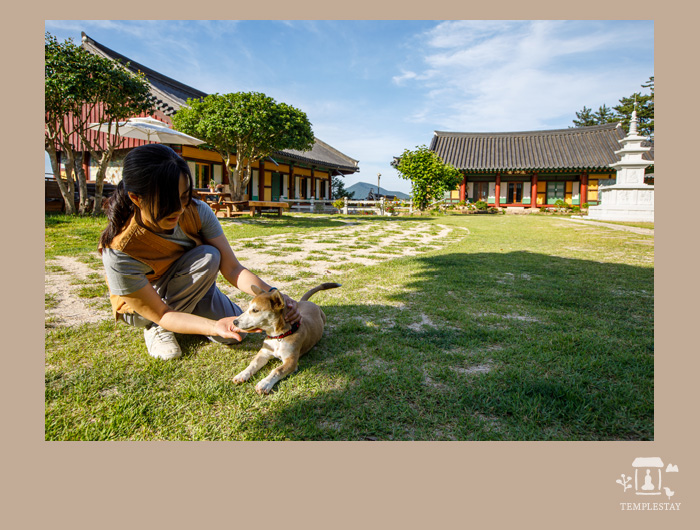
Time to Be True to Myself
Ms. Park says, “While staying at a temple, I can focus completely on myself. At the same time, I can meet many people and live my daily life peacefully. In the process, I think I have practiced letting go of the past and living well in the present.
The process of consciously trying to let go of the relationships in my difficult past that influenced me in some way has helped me a ol t to live well in the present.” Smiling, she adds, “It's hard to seriously look into my current problems when I'm busy with daily life. On the other hand, Templestay gives me the perfect opportunity to seriously reflect on myself while surrounded by mountains, isolated from the outside world, and I can eat the food provided by the temple while feeling safe.”
Based on her Templestay participation—more than 30 times over a short period of 3 years—she also shares a good tip. When you do a long-term Templestay or if you frequently visit a temple, take pictures at the same place and the same time of day.
If you choose a place you like and take pictures of the same place multiple times, and then view the pictures later, you can vividly feel the passage of time and see everything is in a state of flux.
For example, Ms. Park's favorite view at Sinheungsa Temple is the Wando Sea stretching out behind the bell pavilion. She also takes pictures while standing on the third stepping stone in front of the Templestay office building. She also loves the sight of the magnolia trees blooming on both sides of the main buddha hall and watching their flowers fall afterward.
“When I see magnolia buds slowly sprouting, blooming into flowers, and then watching the petals fall, every moment is beautiful and resonates within itself. It's nice to look at, but the significance of these changes really comes across. Although the photos were taken in the same place and with the same composition, no two moments are the same. It changes every moment, but at the same time, it makes me feel that every moment is vividly alive. Isn't that how life is?”
Sinheungsa Temple
+82-10-4181-6499
https://sinheungsa.templestay.com





